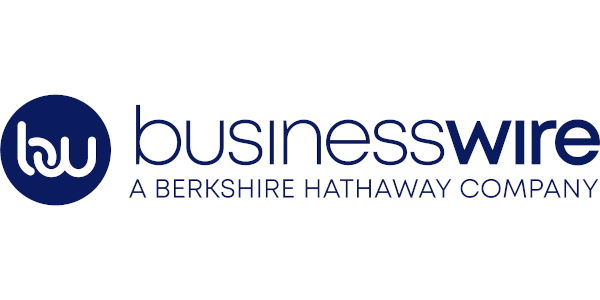—Record low mortgage rates are proving to be a powerful motivator and benefit for home buyers in an otherwise challenging time, says Chief Economist Mark Fleming—
SANTA ANA, Calif.–(BUSINESS WIRE)–First American Financial Corporation (NYSE: FAF), a leading global provider of title insurance, settlement services and risk solutions for real estate transactions, today released First American’s proprietary Potential Home Sales Model for the month of May 2020.
May 2020 Potential Home Sales
- Potential existing-home sales increased to a 4.92 million seasonally adjusted annualized rate (SAAR), a 6.2 percent month-over-month increase.
- This represents a 46.5 percent increase from the market potential low point reached in February 1993.
- The market potential for existing-home sales decreased 7.0 percent compared with a year ago, a loss of nearly 368,120 (SAAR) sales.
- Currently, potential existing-home sales is 1.81 million (SAAR), or 26.9 percent below the pre-recession peak of market potential, which occurred in March 2004.
Market Performance Gap
- The market for existing-home sales outperformed its potential by 11.5 percent or an estimated 565,580 (SAAR) sales.
- The market performance gap decreased by an estimated 312,204 (SAAR) sales between April 2020 and May 2020.
Chief Economist Analysis: Housing Market Potential Rebounds from April Low
“The early signs of a housing market comeback that appeared in mid-April, rising weekly purchase loan applications, continued to surge through May and into June. In fact, weekly purchase loan applications have now exceeded pre-pandemic levels,” said Mark Fleming, chief economist at First American.
“While the coronavirus pandemic continued to negatively impact the domestic and global economy in May, the market potential for existing-home sales rebounded from the April low point, according to our Potential Home Sales Model. In May, housing market potential increased to 4.92 million SAAR, a 6 percent improvement compared with April, but remained 7 percent lower than one year ago,” said Fleming. “The two biggest drivers of the increase in May are slightly loosening credit standards, which allow more potential home buyers to qualify for financing, and the increase in house-buying power due to historically low mortgage rates.
“The increase in house-buying power is also a major reason why market potential is not even lower compared with one year ago,” said Fleming. “During economic downturns, the housing market benefits in one specific way – monetary policy is usually eased to boost the economy, often leading to falling mortgage rates, which increases consumer house-buying power and makes homes more affordable. Relative to one year ago, the potential for existing-home sales declined by 368,120 (SAAR), but it could’ve been worse were it not for the house-buying power boost from low mortgage rates.”
Tight Credit Standards, Limited Supply Dampen Housing Market Potential
“In May, there were several forces holding back the market potential for existing-home sales. Lenders have tightened their lending criteria to account for the greater likelihood of forbearance and delinquency. Even though lenders eased credit standards slightly in May compared with April, tightening credit still had the largest year-over-year negative impact (565,340 potential home sales) on potential home sales,” said Fleming. “Additionally, increasing tenure length means fewer homes for sale, further limiting housing supply and reducing housing market potential by 362,440 sales. The supply of new homes for sale also fell relative to one year ago, further reducing the ability to find something to buy, and thereby holding back potential by 1,916 sales.”
Low Mortgage Rates Buoy Housing Market Potential
“Given these headwinds, the market potential for existing-home sales could have declined by nearly 930,000 sales. Yet, the 30-year, fixed-rate mortgage fell to its lowest level in nearly 50 years in May, boosting house-buying power by 15.3 percent relative to one year ago,” said Fleming. “The increase in house-buying power resulted in a 354,000 increase in potential home sales, helping offset some of the impact from the credit and housing supply headwinds.
“Additionally, millennials continue to form new households amid the pandemic, which boosted demand for housing by 152,000 sales. Finally, the continued growth in house price appreciation, which is the result of rising demand against limited supply of homes for sale, positively contributed to potential home sales in May relative to one year ago by 56,000 sales,” said Fleming. “As a homeowner gains equity in their home, they are more likely to consider purchasing a larger or more attractive home. However, if equity is low, homeowners are likely to remain ‘equity locked-in’ to their home.”
Mortgage Rates Expected to Remain Low Through 2021
“In the first week of June, many were concerned that the good news from the May jobs report would result in rising mortgage rates. While rates did jump up briefly, they have since fallen back to historic lows. The consensus among real estate and mortgage finance economists is that mortgage rates may fluctuate, but are likely to remain near historic lows through 2021,” said Fleming. “Our Potential Home Sales Model indicates that even if mortgage rates climbed to 3.5 percent, all else held equal, the market potential for existing-home sales would decrease modestly from 4.92 million SAAR to 4.84 million SAAR.
“It’s likely that mortgage rates may rise again from their historically low levels, but house-buying power is positioned to remain strong by any reasonable historic standard,” said Fleming. “Record low mortgage rates are proving to be a powerful motivator and benefit for home buyers in an otherwise challenging time.”
Next Release
The next Potential Home Sales Model will be released on July 21, 2020 with June 2020 data.
About the Potential Home Sales Model
Potential home sales measures existing-homes sales, which include single-family homes, townhomes, condominiums and co-ops on a seasonally adjusted annualized rate based on the historical relationship between existing-home sales and U.S. population demographic data, homeowner tenure, house-buying power in the U.S. economy, price trends in the U.S. housing market, and conditions in the financial market. When the actual level of existing-home sales are significantly above potential home sales, the pace of turnover is not supported by market fundamentals and there is an increased likelihood of a market correction. Conversely, seasonally adjusted, annualized rates of actual existing-home sales below the level of potential existing-home sales indicate market turnover is underperforming the rate fundamentally supported by the current conditions. Actual seasonally adjusted annualized existing-home sales may exceed or fall short of the potential rate of sales for a variety of reasons, including non-traditional market conditions, policy constraints and market participant behavior. Recent potential home sale estimates are subject to revision to reflect the most up-to-date information available on the economy, housing market and financial conditions. The Potential Home Sales model is published prior to the National Association of Realtors’ Existing-Home Sales report each month.
Disclaimer
Opinions, estimates, forecasts and other views contained in this page are those of First American’s Chief Economist, do not necessarily represent the views of First American or its management, should not be construed as indicating First American’s business prospects or expected results, and are subject to change without notice. Although the First American Economics team attempts to provide reliable, useful information, it does not guarantee that the information is accurate, current or suitable for any particular purpose. © 2020 by First American. Information from this page may be used with proper attribution.
About First American
First American Financial Corporation (NYSE: FAF) is a leading provider of title insurance, settlement services and risk solutions for real estate transactions that traces its heritage back to 1889. First American also provides title plant management services; title and other real property records and images; valuation products and services; home warranty products; property and casualty insurance; banking, trust and wealth management services; and other related products and services. With total revenue of $6.2 billion in 2019, the company offers its products and services directly and through its agents throughout the United States and abroad. In 2020, First American was named to the Fortune 100 Best Companies to Work For® list for the fifth consecutive year. More information about the company can be found at www.firstam.com.
Contacts
Media Contact:
Marcus Ginnaty
Corporate Communications
First American Financial Corporation
(714) 250-3298
Investor Contact:
Craig Barberio
Investor Relations
First American Financial Corporation
(714) 250-5214






